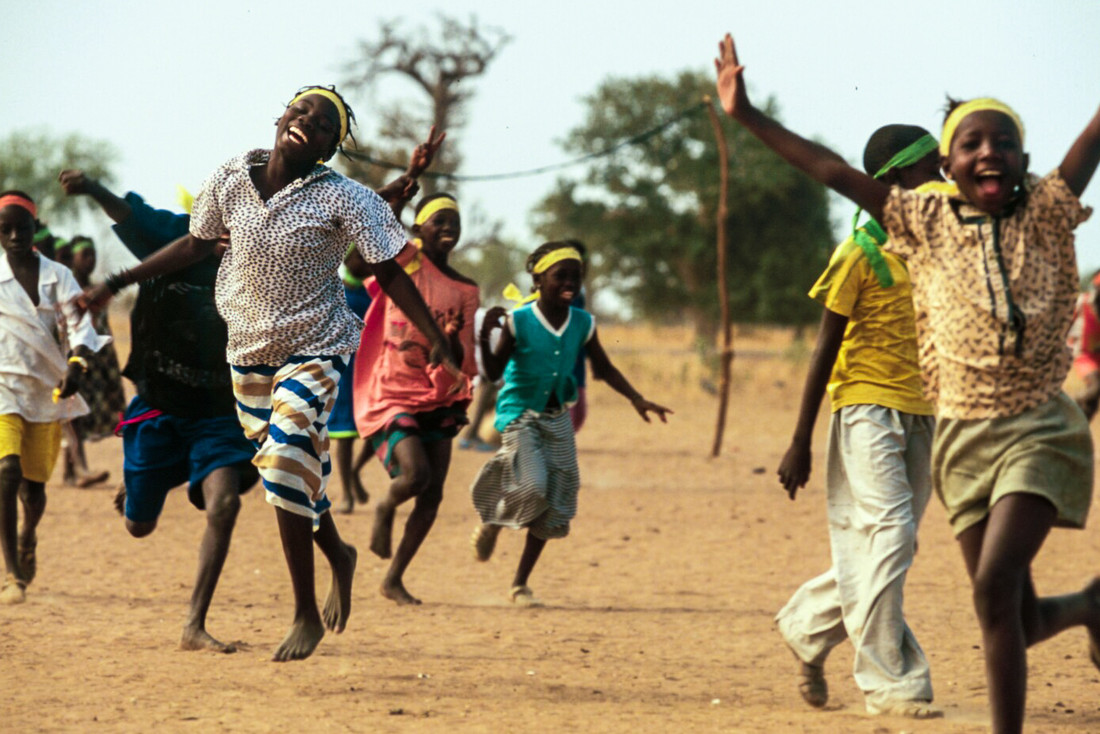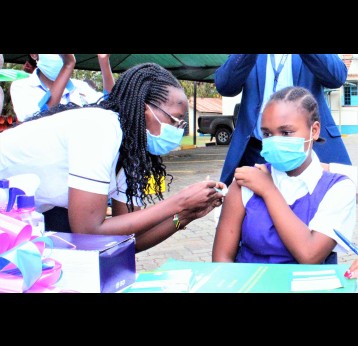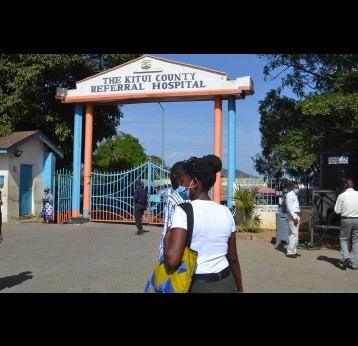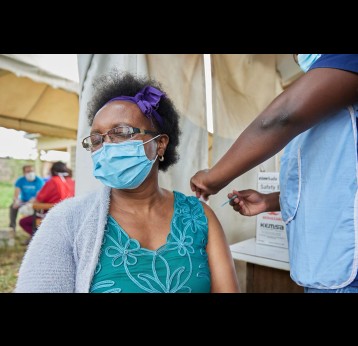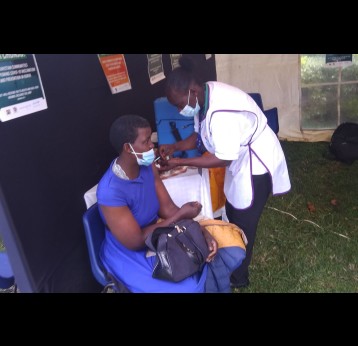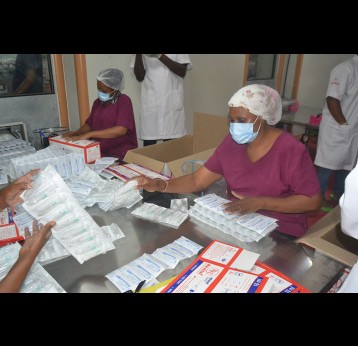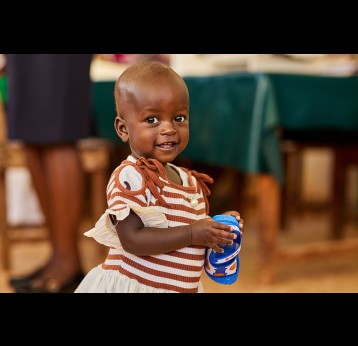Country Information
DTP3 / immunisation coverage
Grade of ConfidenceCommitments: Multi-year programme budgets endorsed in principle by the Gavi Board. These become financial commitments upon approval each year for the following calendar year.
Approvals: Total Approved for funding
Disclaimer: the boundaries and names shown and the designations used on this map do not imply the expression of any opinion whatsoever on the part of Gavi, the Vaccine Alliance concerning the legal status of any country, territory, city or area or of its authorities, or concerning the delimitation of its frontiers or boundaries. Dotted lines on maps represent approximate border lines for which there may not yet be full agreement.
This Gavi country data is made available under the Creative Commons BY 4.0 license: https://creativecommons.org/licenses/by/4.0/
Latest News
All News11 March 2022
Kenya’s HPV vaccine strategies re-activated for COVID-19
Strategies to ensure effective HPV vaccinations in Kenya have been modified to boost rollout of the COVID-19 vaccine.
2 March 2022
Kenya’s Health Ministry partners with NGO to ramp up COVID-19 vaccination
The partnership with SHOFCO is expected to support the government’s push to administer 20 million jabs between January and June 2022, as well as keep routine immunisation going.
1 March 2022
Kangaroo care saving babies’ lives in rural Kenya
Kangaroo care – close skin to skin contact with a baby from birth – is not only helping premature babies to survive in Eastern Kenya, it is also helping to change perceptions around COVID-19.
21 February 2022
Social media helps boost vaccine coverage in Kenya
Social media and digital advertising has contributed to an increase in immunisation in Kenya.
10 February 2022
Vaccinating in Kenya’s remote Samburu and Turkana counties
The county governments in Samburu and Turkana have collaborated to ensure that villagers are vaccinated.
8 February 2022
How did Kenya surpass its 2021 COVID-19 vaccination target?
Kenya was aiming to reach 10 million people with COVID-19 vaccines by the end of December 2021. Thanks to a clear strategy, COVAX support and the hard work of thousands of health workers, they reached their target.
3 February 2022
Faced with the many disease threats posed by repeated, calamitous floods, Nyando in western Kenya needs its health services more than ever. But longer-term resiliency will require more than just a shot in the arm.
20 January 2022
Workers at a Kenyan syringe company set the record straight
Workers from a syringe-making company in Kilifi, Kenya have been changing minds around the COVID-19 vaccine.
19 January 2022
Kisumu County’s 100-day immunisation campaign
In November 2021 Kenya’s Kisumu County launched a large scale measles-rubella vaccine campaign to reach 100% of unvaccinated children.
Subscribe to our newsletter
Sources
| Name | Source | Date |
|---|---|---|
| Total population by country, by year, by age | United Nations, United Nations, Department of Economic and Social Affairs, Population Division. World Population Prospects. | 2019-07-31 |
| Total number of children surviving until 1 year old by country and by year | United Nations, United Nations, Department of Economic and Social Affairs, Population Division. World Population Prospects. | 2019-07-31 |
| UN Life births per gender | United Nations, United Nations, Department of Economic and Social Affairs, Population Division. World Population Prospects. | 2019-07-31 |
| Under-five mortality rate by country and by year | UNICEF CME Info http://www.childmortality.org/, Level & Trends in Child Mortality. Estimates Developed by the UN Inter-agency Group for Child Mortality Estimation (UNICEF, WHO, World Bank, UN DESA, UNPD). | 2020-09-01 |
| Infant mortality rate by country and by year | United Nations, United Nations, Department of Economic and Social Affairs, Population Division. World Population Prospects. | 2020-09-01 |
| GNI per capita, Atlas method (current US$) | World Bank, The gross national income, converted to U.S. dollars using the World Bank Atlas method, divided by the midyear population | 2021-07-01 |
| Antigen Coverage (%) by country and by year | WHO/UNICEF, Coverage refers to the number of administered doses divided by the number of eligible children to receive that vaccine. | 2021-07-15 |
| Percentage of districts with >=80% DTP3 coverage | WHO, Joint Reporting Form (JRF) | 2021-07-15 |
| Percentage of districts with <50% DTP3 coverage | WHO, Joint Reporting Form (JRF) | 2021-07-15 |
| Total Disbursed - Finance Disbursement | GAVI, Access software for Finance (in USD) | 2019-09-17 |
Grade of Confidence (GoC): The WHO and UNICEF estimates of national immunisation coverage (wuenic) are based on data and information that are of varying, and, in some instances, unknown quality. Beginning with the 2011 revision WHO/UNICEF describe their grade of confidence (GoC) in these estimates. As there is no underlying probability model upon which the estimates are based, WHO/UNICEF are unable to present classical measures of uncertainty, e.g., confidence intervals. Moreover, WHO/UNICEF have chosen not to make subjective estimates of plausibility/certainty ranges around the coverage. The GoC reflects the degree of empirical support upon which the estimates are based. It is not a judgment of the quality of data reported by national authorities.
|
Explanation of GoC values: |
|
| *** |
Estimate is supported by reported data [R+], coverage recalculated with an independent denominator from the World Population Prospects from the UN Population Division (D+), and at least one supporting survey within 2 years [S+]. While well supported, the estimate still carries a risk of being wrong. |
| ** | Estimate is supported by at least one data source; [R+], [S+], or [D+]; and no data source, [R-], [D-], or [S-], challenges the estimate. |
| * | There are no directly supporting data; or data from at least one source; [R-], [D-], [S-]; challenge the estimate. |

